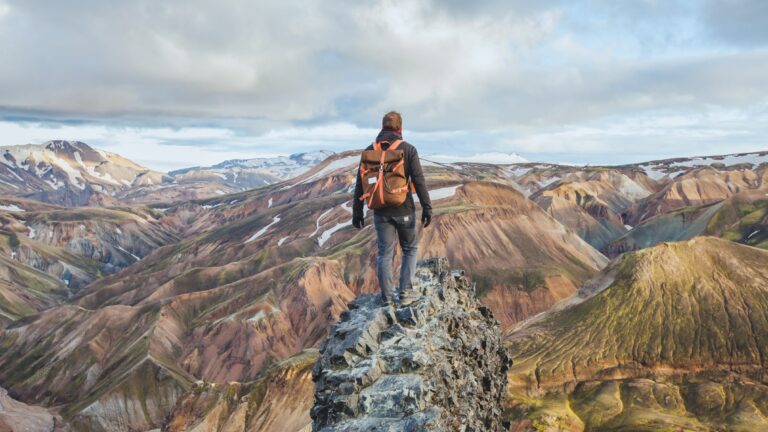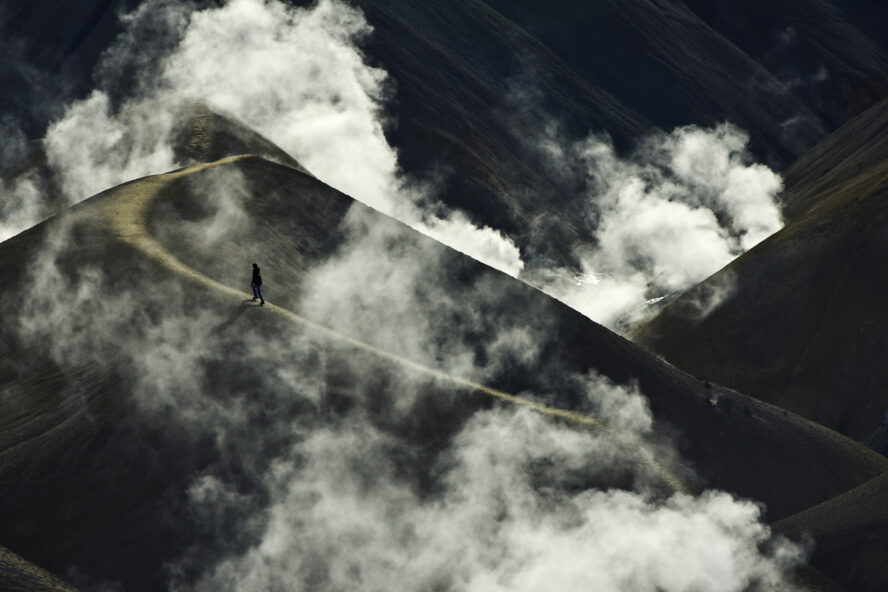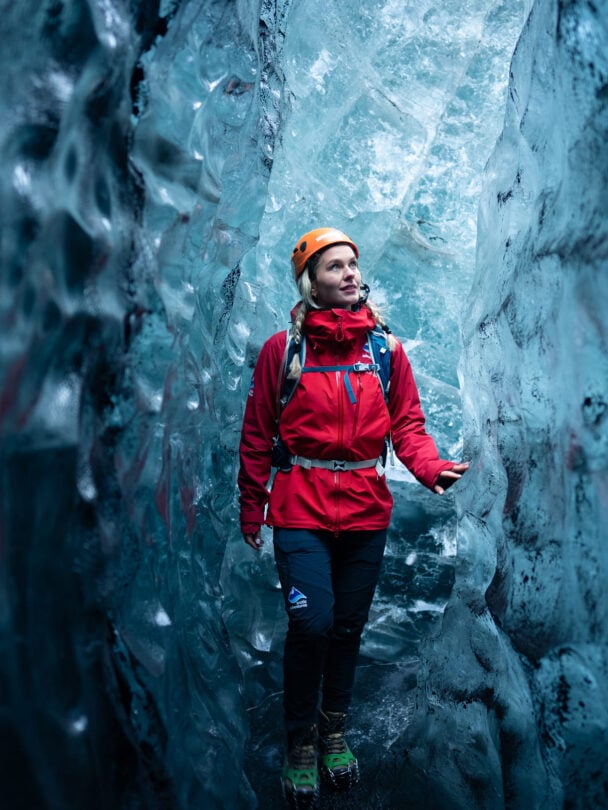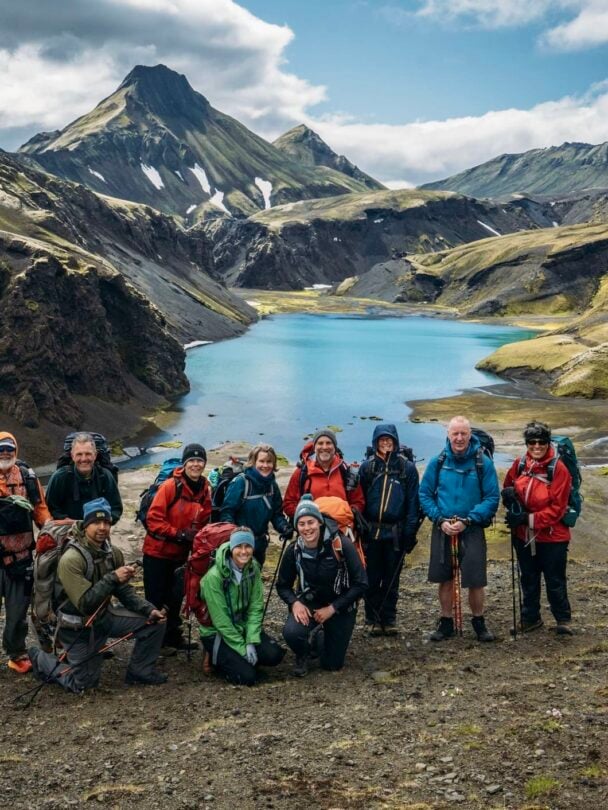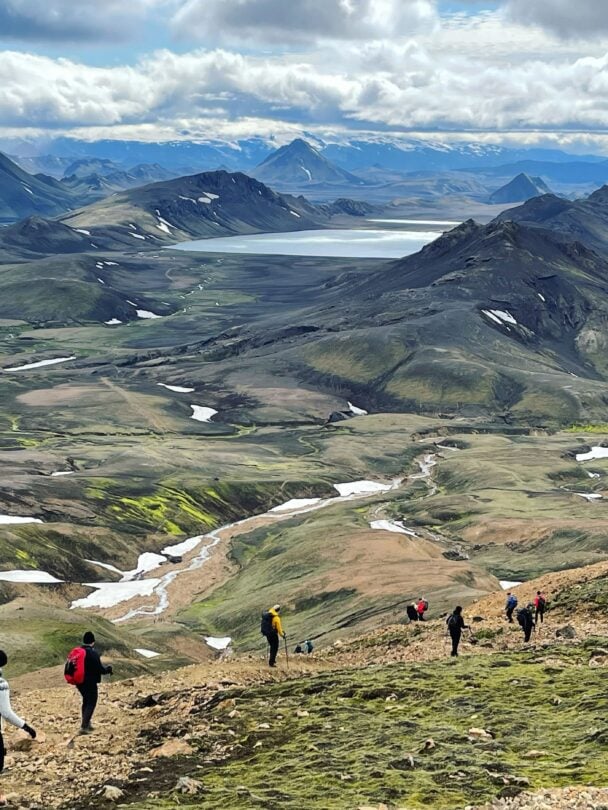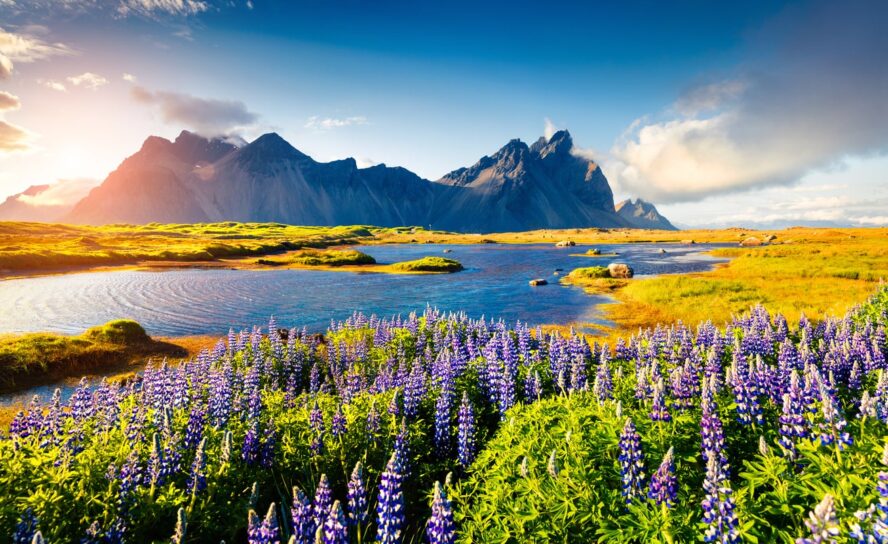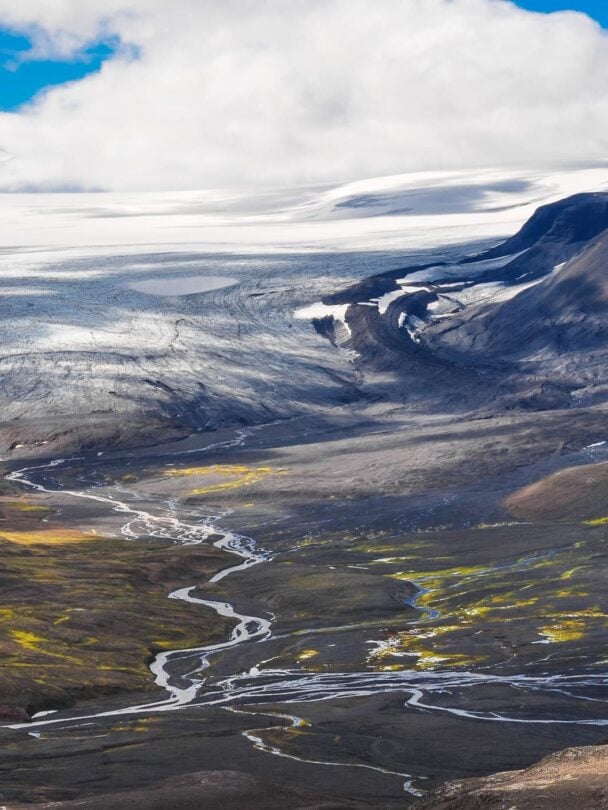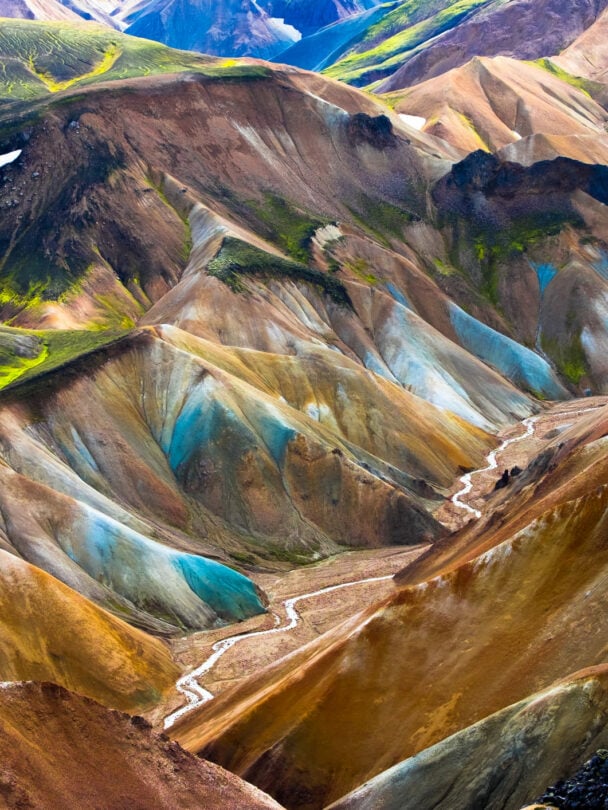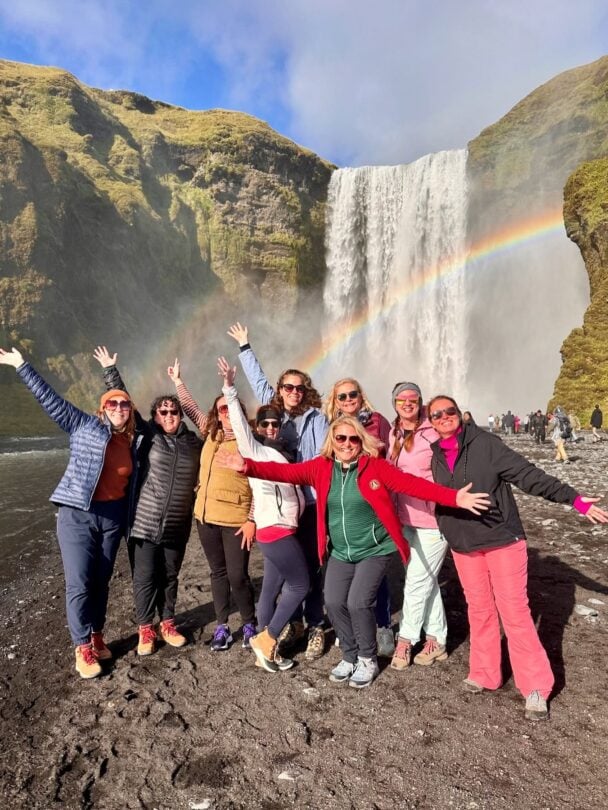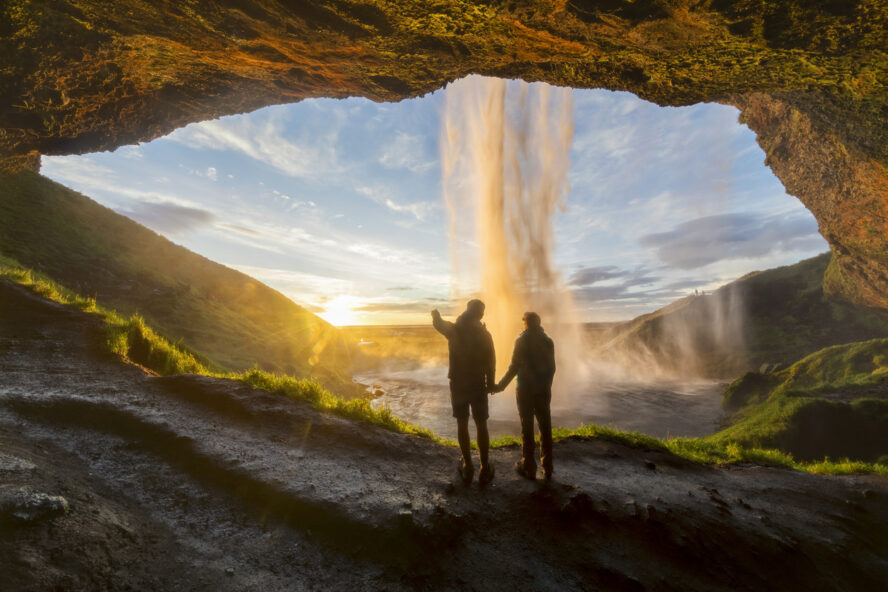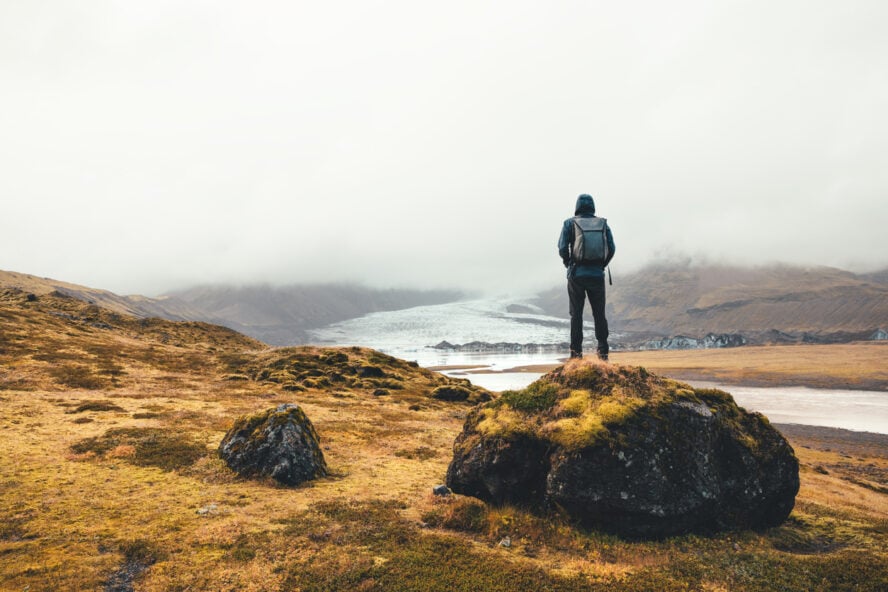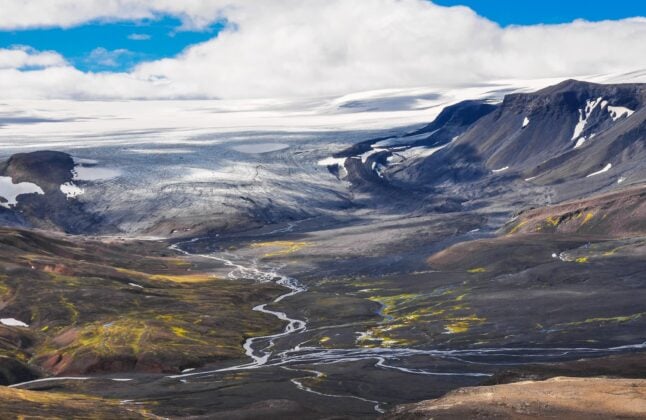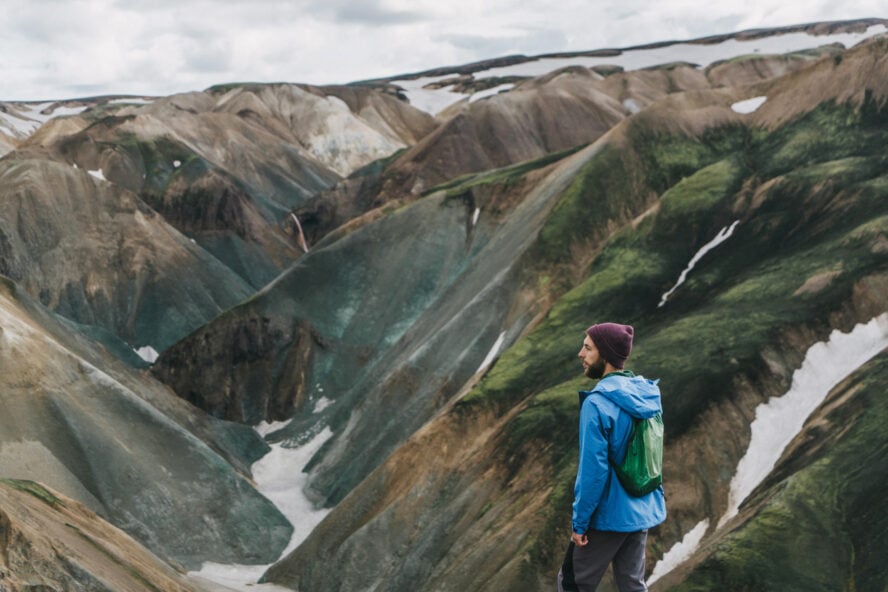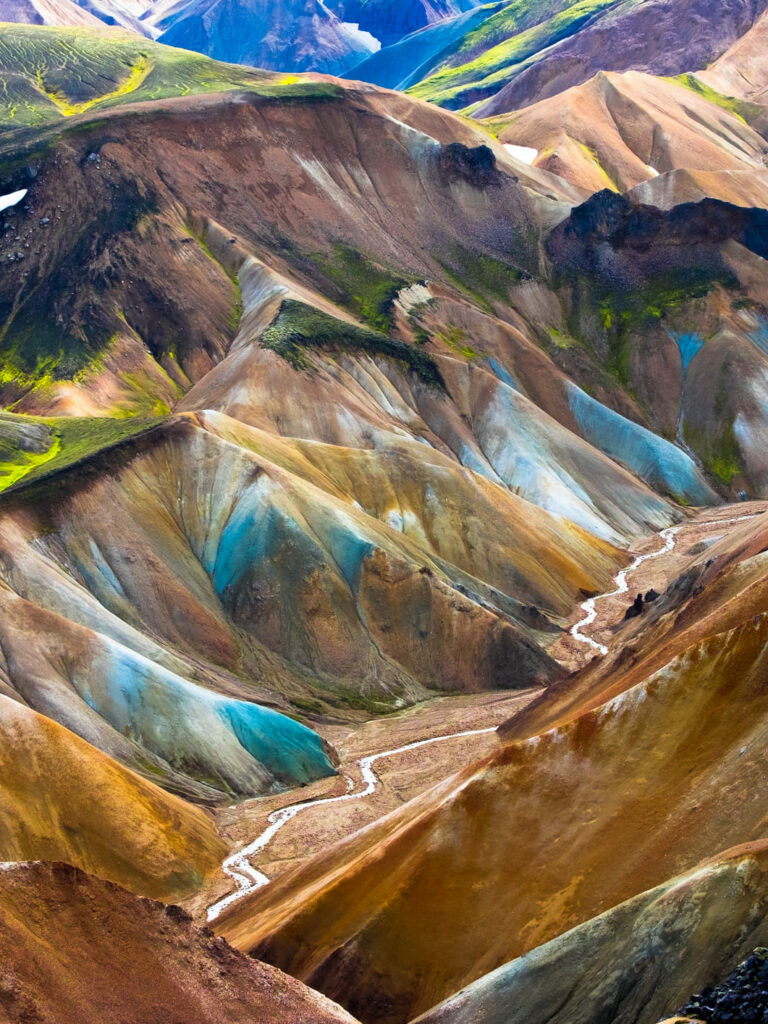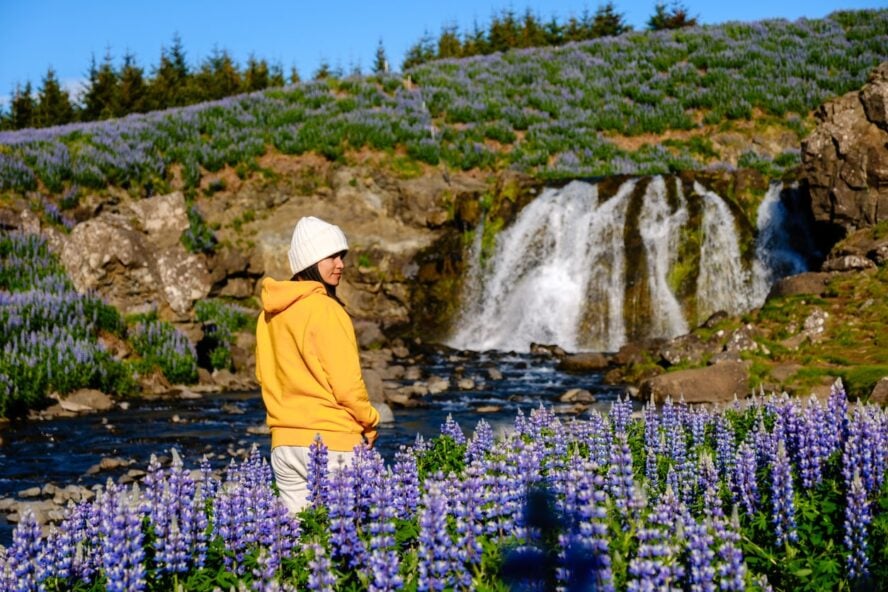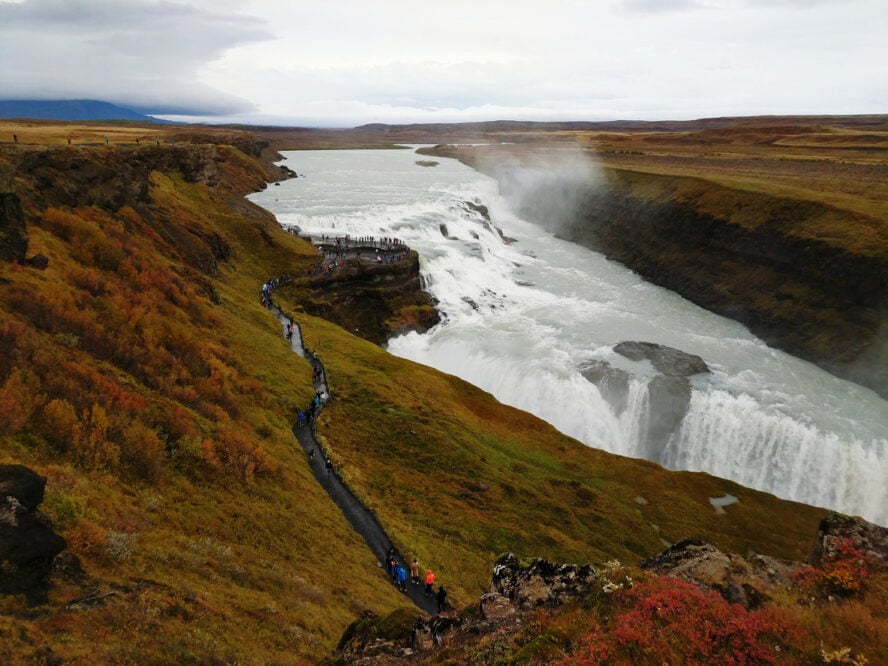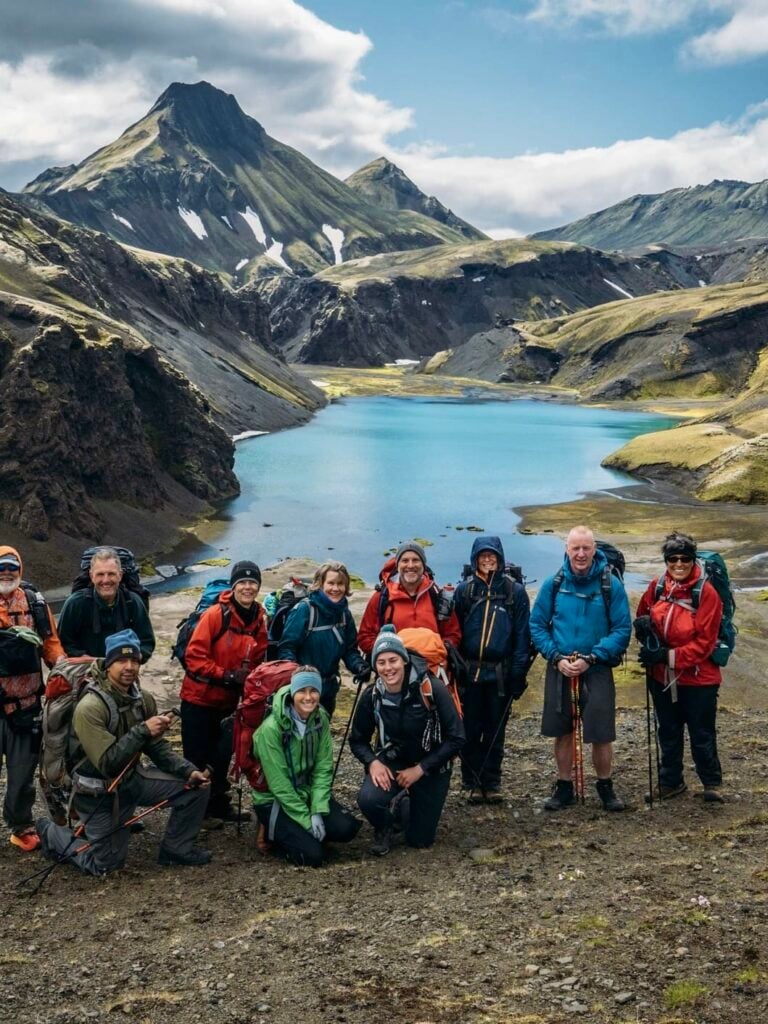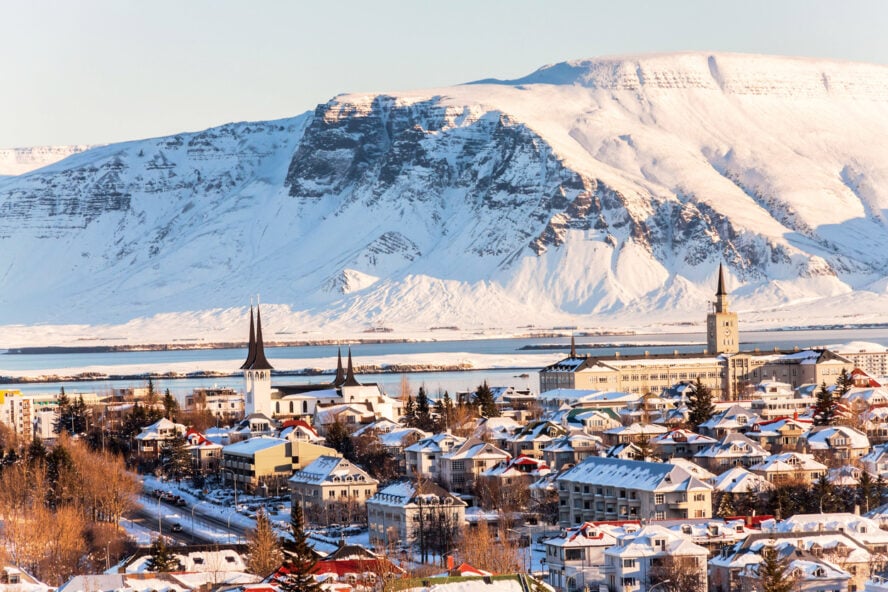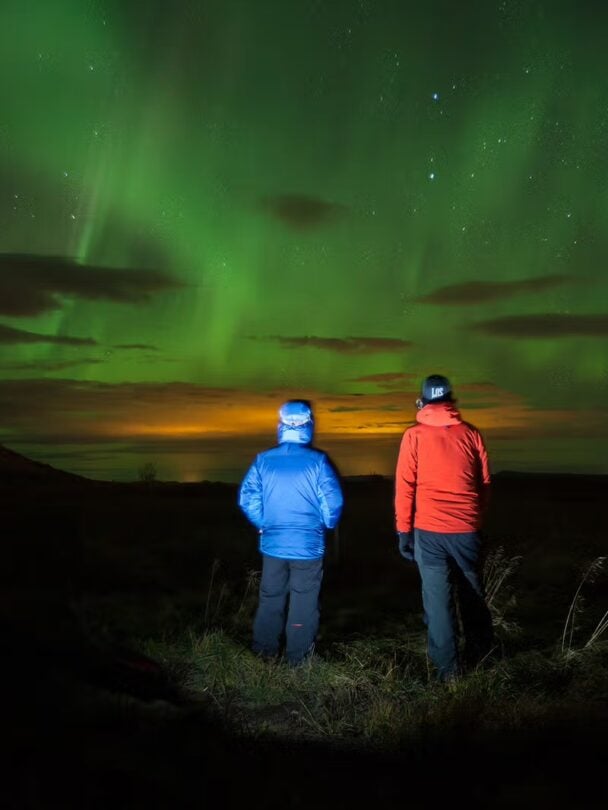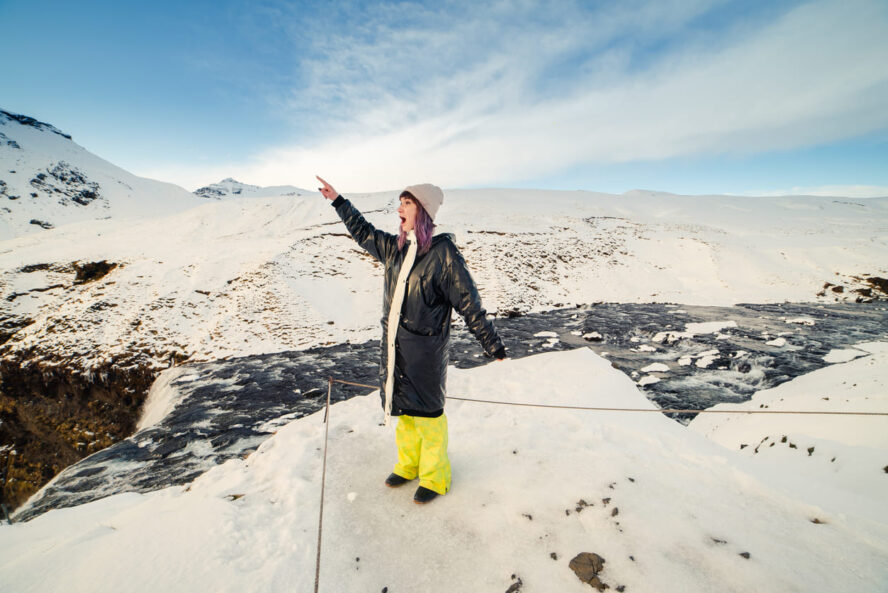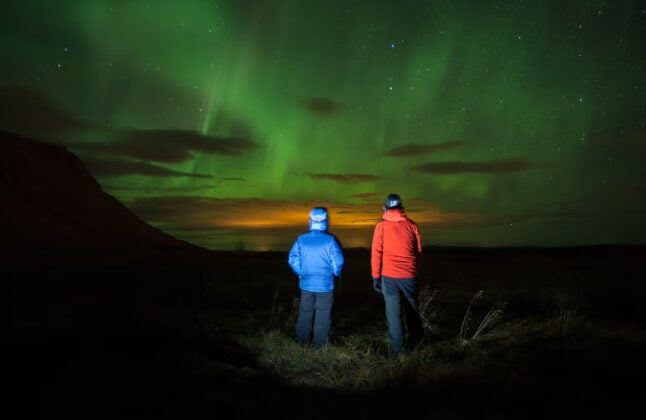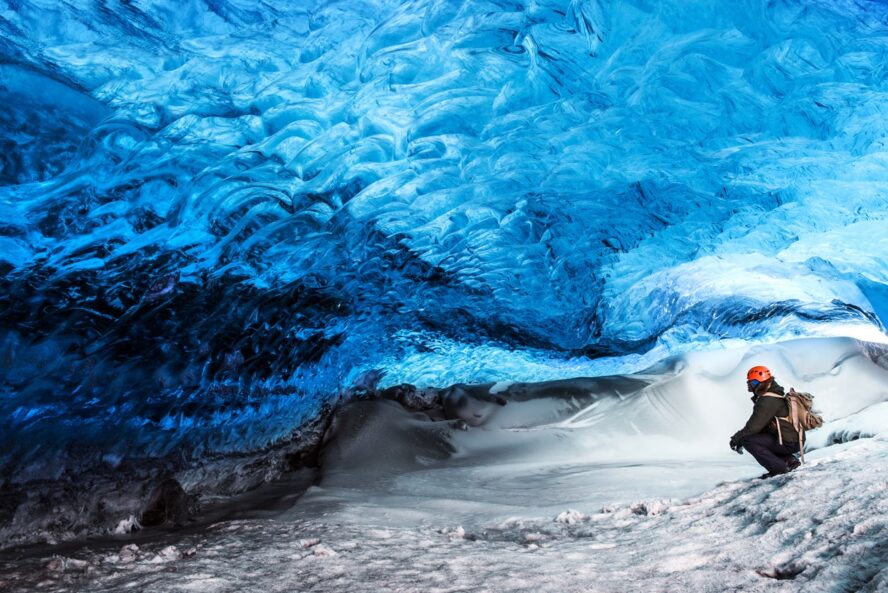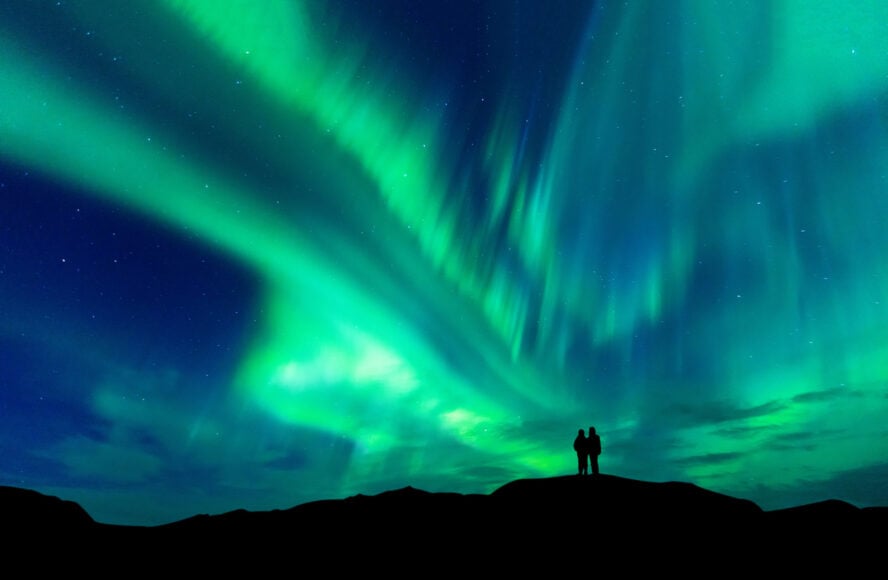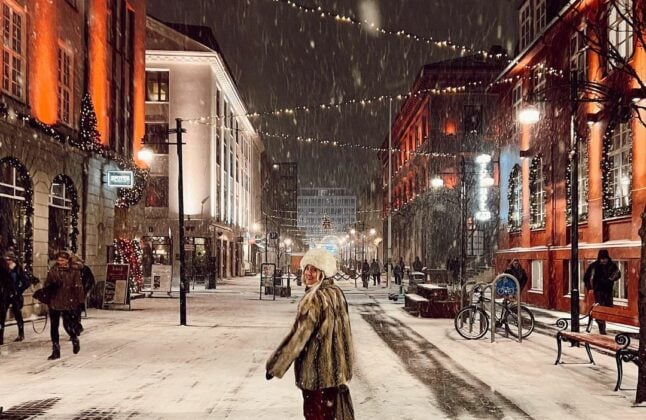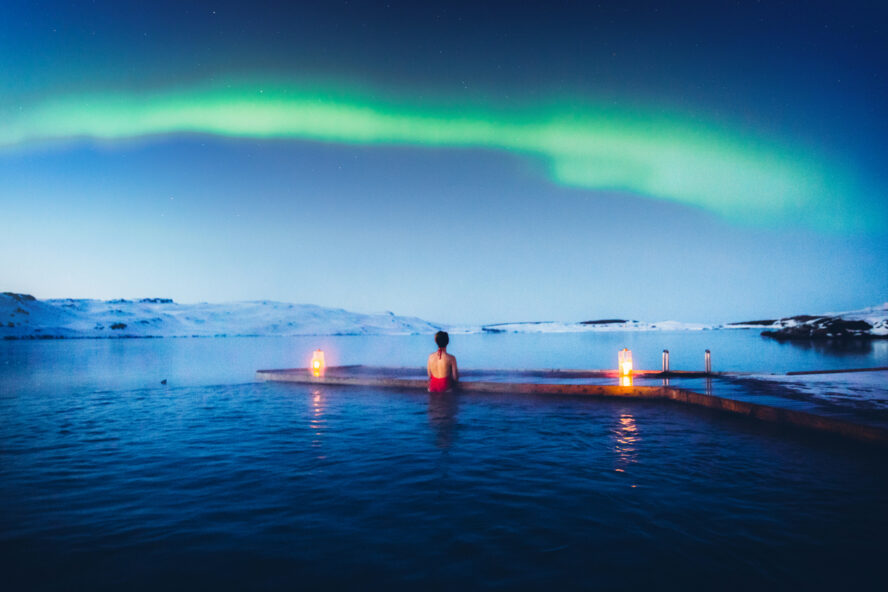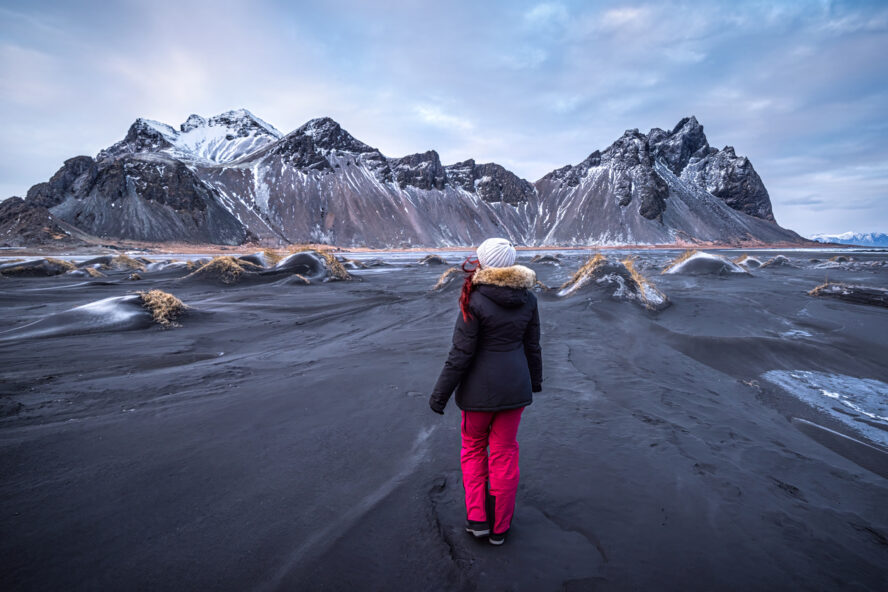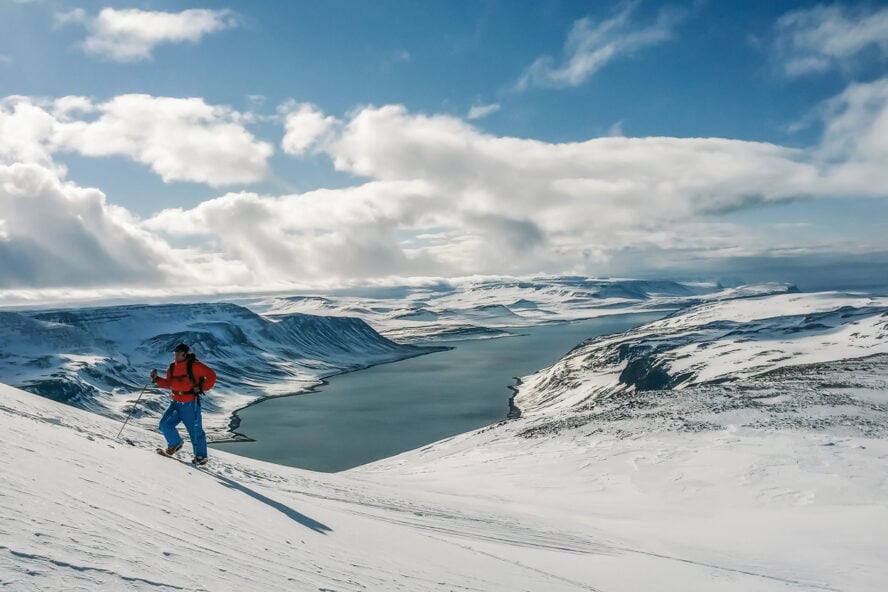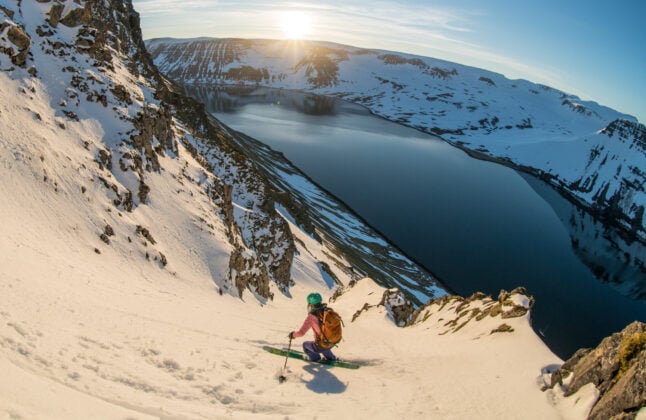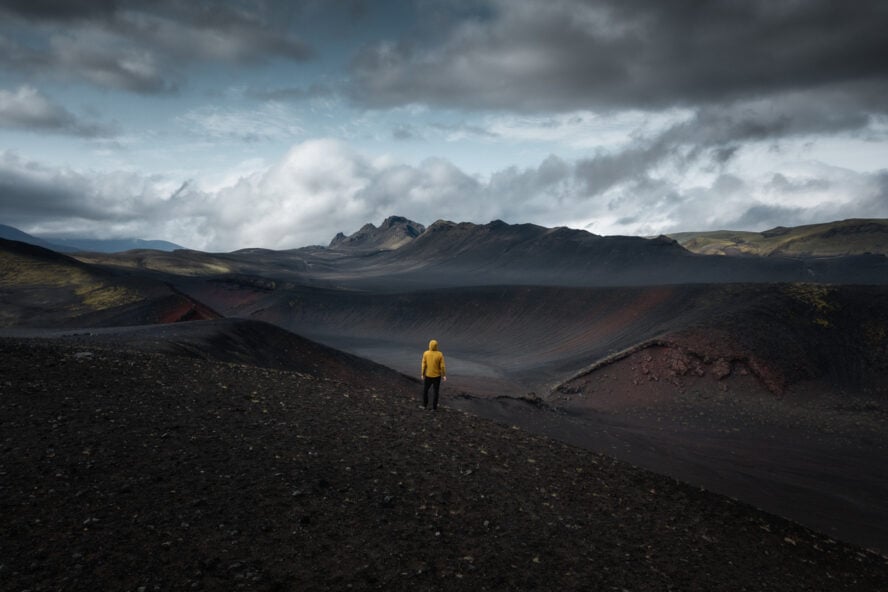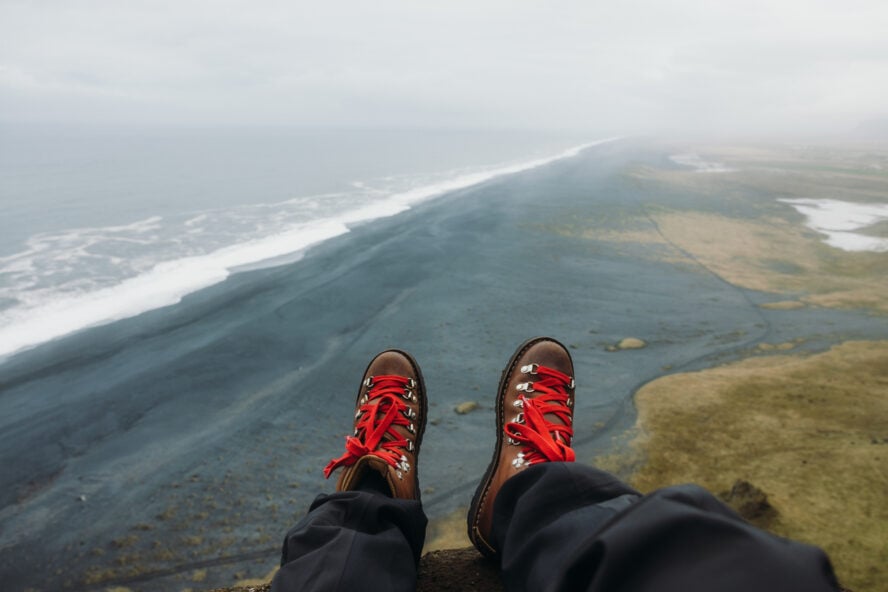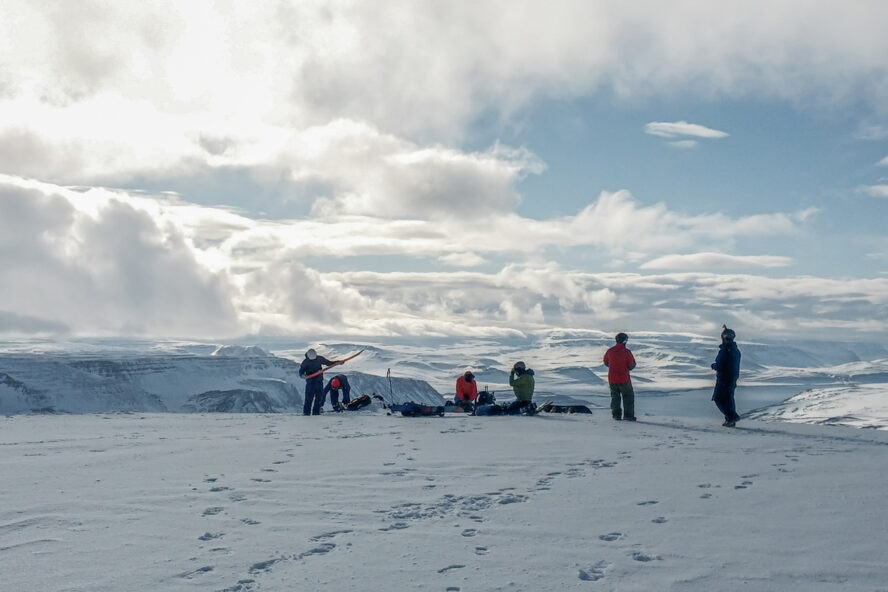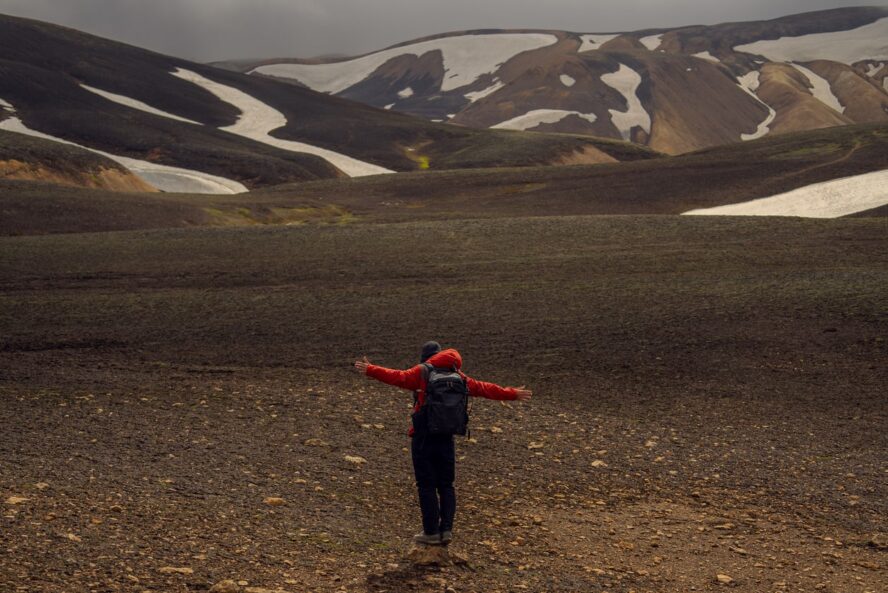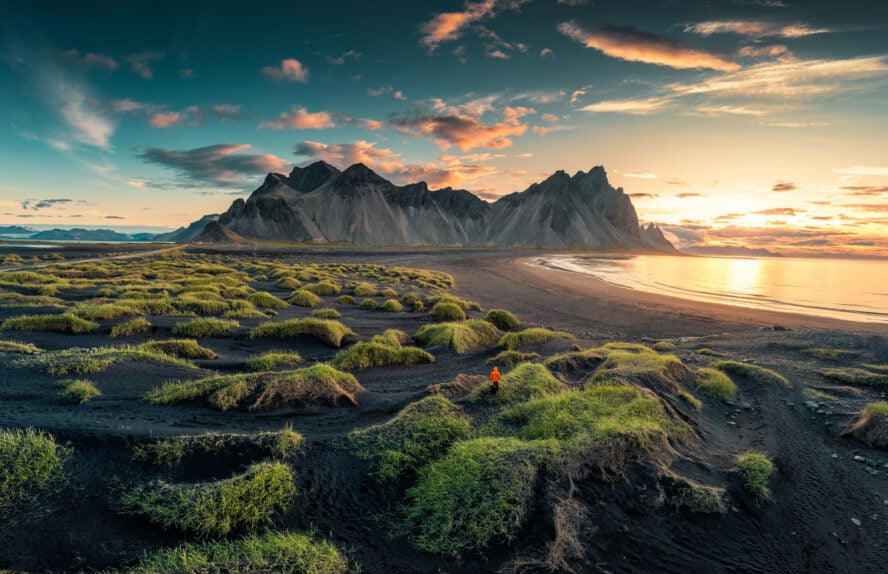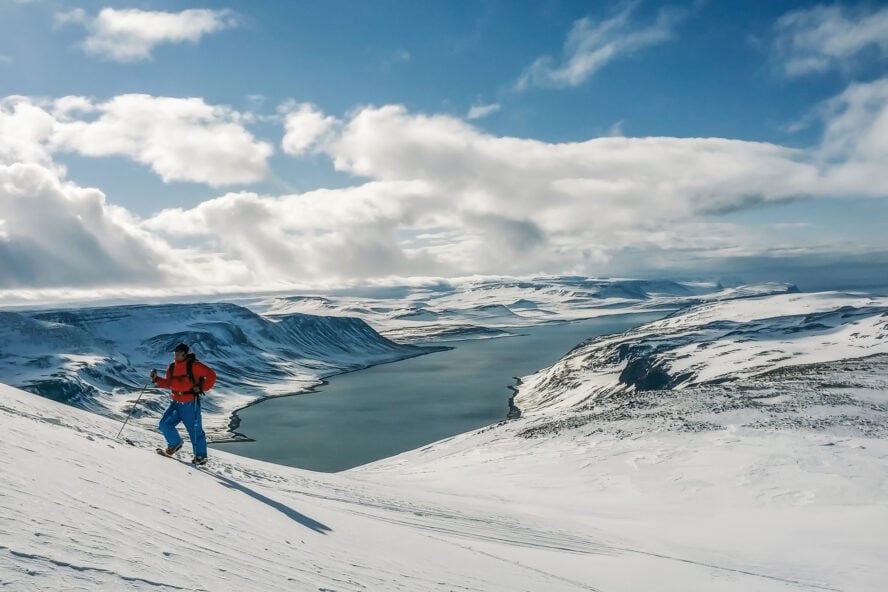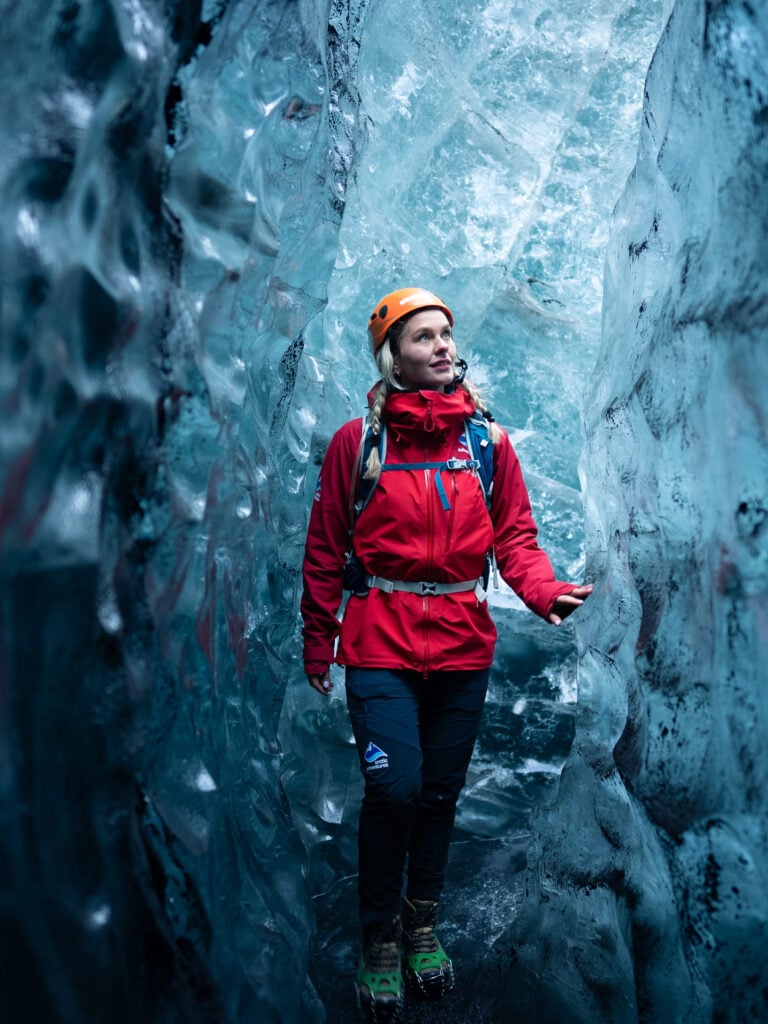If there’s one truth every traveler to Iceland learns fast, it’s this: the weather makes the rules. The country’s beauty is as raw as it is unpredictable. Glaciers give way to lava fields, sunshine turns to sleet in minutes, and one valley may feel like spring while the next is a scene from deep winter. That’s the charm of adventuring here. It’s also having a good Iceland packing list can mean the difference between comfort and misery.
Heading north to hike the Laugavegur Trail in July or to hunt for the aurora in December? This Iceland packing list will help you prepare for every kind of element this land throws your way, from volcanic winds to cozy geothermal soaks.
This is our roadmap to traveling light, layered, and ready for anything.
Land of Fire, Ice, and Unpredictable Weather
The name says it all: Iceland is a contradiction of extremes.
In summer, daylight can stretch 24 hours; in winter, darkness falls before dinner. Average temperatures swing only slightly, from around 0°C (32°F) in winter to 13°C (55°F) in summer. But it’s the wind, rain, and rapid weather changes that test even seasoned travelers.
You might experience four seasons in one day: a clear sunrise, a mid-morning squall, calm noon warmth, and a snow flurry by dusk. That’s why the Icelandic saying “If you don’t like the weather, wait five minutes” rings so true.
So what does that mean for your packing list? Versatility. Every piece of clothing or gear you bring should serve multiple purposes. Layers, not bulk. are your best friends here. And durability matters: Iceland’s landscapes aren’t gentle on flimsy gear.
Let’s break down what to pack, month by month, starting with summer’s lush green adventures before heading into the deep freeze of winter’s northern lights.
Iceland Packing List – Summer (May to September)
Summer in Iceland feels alive. Wildflowers bloom, trails open in the Highlands, and waterfalls roar with snowmelt. It’s also when most visitors arrive, drawn by the long days, mild temperatures, and endless hiking options.
The key to packing for Iceland in summer is layering for variable conditions. Even when it’s “warm,” coastal winds or sudden showers can chill you fast. Aim for an Iceland packing list that includes a moisture-wicking base, an insulating mid-layer, and a fully waterproof outer shell.
Iceland Summer Essentials – Your Quick Checklist
-
Waterproof jacket and pants: Breathable and durable enough to withstand wind and rain.
-
Merino wool base layers: Lightweight, odor-resistant, and warm even when damp.
-
Insulating fleece or down jacket: For cooler mornings and highland hikes.
-
Quick-dry hiking pants: Convertible or softshell varieties work best.
-
Wool hat and gloves: Yes, even in summer!
-
Sturdy hiking boots: Waterproof with good ankle support.
-
Casual clothes: For Reykjavik cafes and evenings in guesthouses.
-
Bathing suit: For hot springs, lagoons, or spontaneous river dips.
-
Reusable water bottle: Tap water is some of the cleanest in the world.
-
Sleep mask: Midnight sun can make sleeping tricky.
-
Light gloves and scarf: Winds can whip at any time of year.
Now, let’s see what to pack for Iceland, month by month.
What to Pack for Iceland in May
May is Iceland’s quiet transition from winter to spring.
Snow still blankets the mountains, but the lowlands are beginning to burst into green. Expect average highs of 7–10°C (45–50°F), chilly winds, and long daylight hours.
You’ll need a full waterproof and windproof outer shell, mid-weight layers, and a light down or insulated jacket for evenings. Add waterproof hiking boots with solid grip. Trails can still be muddy or icy at higher elevations. Vibram soles are always a good pick.
This is also puffin season along the coasts, so pack binoculars and a camera lens with good zoom if you’re into wildlife viewing.
What to Pack for Iceland in June
By June, Iceland hits its stride. Trails open in the Highlands, lupine fields bloom, and daylight lasts nearly 24 hours. Temperatures hover around 10–15°C (50–59°F), but wind and rain are never far.
Opt for breathable, quick-dry layers: merino T-shirts, softshell hiking pants, and a lightweight fleece. Keep your rain gear handy at all times; even on sunny days, sudden squalls are common.
You can skip the heavy parka, but a thin down or synthetic jacket is essential for cooler nights, especially if you’re camping or staying in mountain huts.
And don’t forget a sleeping mask. In the land of the midnight sun, darkness is rare!
What to Pack for Iceland in July
July is high summer, and the busiest hiking season. It’s the best time for multi-day treks like the Laugavegur Trail or volcanic hikes in Landmannalaugar. Expect temperatures between 10–17°C (50–62°F), though mountain zones can feel much colder.
Your packing list should prioritize comfort and breathability. A moisture-wicking base layer, light hiking shirt, and convertible pants are ideal. Bring a packable down jacket for evening chills and sturdy, broken-in hiking boots for varied terrain.
A buff or lightweight scarf helps protect your face from volcanic dust on windy days, and gaiters can be useful for river crossings.
What to Pack for Iceland in August
August is similar to July but slightly wetter, especially in the south. The Highlands are still open, and wildflowers are at their peak. Pack a robust rain jacket, mid-weight base layers, and waterproof boots that can handle muddy trails.
If you plan to visit the glaciers or join guided hikes, bring crampon-compatible boots. Some higher routes may still hold snow patches.
Evenings can feel autumnal by late August, so a warm hat and gloves return to the list.
What to Pack for Iceland in September
September marks the start of the shoulder season. Fewer crowds, cooler air, and the first chance to see the Northern Lights. Expect temperatures between 5–12°C (41–54°F).
Add a heavier insulating layer and thicker base layers, as nights hiking in the Highlands can dip below freezing. The light rain jacket you used in summer may need to be swapped for a fully waterproof shell with taped seams.
Bring wool socks, a cozy beanie, and thermal leggings, and prepare for shorter days. The sun sets by 8 PM.
Iceland Packing List – Winter (October to April)
Winter in Iceland isn’t a time to hibernate. It’s a time to explore differently.
Waterfalls freeze into ice sculptures, the Northern Lights dance across starry skies, and cozy guesthouses offer warm refuges from the cold.
Packing for Iceland in winter is about staying dry, warm, and visible. Winter in Iceland is all about thermal insulation, wind resistance, and traction, plus a few smart accessories that make life in the cold easier.
Iceland Summer Essentials – Your Quick Checklist
-
Heavy-duty waterproof parka: Windproof and insulated.
-
Thermal base layers: Merino wool or synthetic for moisture control.
-
Mid-weight fleece or down jacket: For layering under outerwear.
-
Snow pants or lined trekking trousers: Waterproof and breathable.
-
Waterproof insulated boots: With deep tread or crampons for ice.
-
Wool socks: Bring extra pairs; wet feet get cold fast.
-
Beanie, neck gaiter, and insulated gloves: Wind-chill protection is important.
-
Headlamp: Daylight lasts only 4–5 hours mid-winter.
-
Microspikes or Yaktrax: Essential for icy sidewalks and trails.
-
Swimsuit: For geothermal pools and hot springs.
-
Dry bags: Keep electronics safe from snow and rain.
Now let’s unpack winter, month by month.
What to Pack for Iceland in October
October sits between seasons: cool, crisp, and perfect for photographers. Highs go to around 6–10°C (43–50°F) with a mix of sunshine, fog, and rain.
Bring a warm down jacket, mid-layer fleece, and waterproof shell. You’ll want gloves, a hat, and a scarf even in the city, as well as sturdy waterproof boots for hiking trails and waterfalls.
This is also when the Northern Lights make their seasonal debut, so pack a tripod and a headlamp with a red-light mode for night photography.
What to Pack for Iceland in November
By November, winter has arrived in full. Snow begins to dust the landscapes, daylight fades quickly, and temperatures drop close to freezing.
Layer up with thermal underwear, a thick sweater, and an insulated parka. Add microspikes or crampons to your boots for icy conditions, and keep hand warmers in your pack.
If you plan to rent a car, bring sunglasses. Not for heat, but for glare off snow and ice.
What to Pack for Iceland in December
The darkest month of the year offers only four hours of daylight. It’s the best time to visit Iceland for chasing the aurora or soaking in a geothermal lagoon.
Your packing list should emphasize warmth and visibility: a windproof parka, thermal base layers, insulated boots, and reflective gear (yes, locals wear it daily in winter).
Don’t forget swimwear! Icelanders hit hot springs year-round, even when it’s snowing. There’s nothing like floating in steaming water as snowflakes land on your eyelashes.
What to Pack for Iceland in January
January is the coldest month, though “cold” in Iceland is relative: coastal temperatures often hover around 0°C (32°F). The real challenge is the wind chill, which can make it feel far colder.
Bring a serious winter coat, snow pants, and waterproof gloves, plus thermal leggings and wool socks for everyday wear. In rural areas, icy roads are common, so traction aids remain essential.
This is prime ice cave and glacier hiking season. If you’re joining a guided tour, your outfitter may provide specialized equipment, but check beforehand.
What to Pack for Iceland in February
Days are slowly lengthening, and conditions can swing between deep snow and early thaw. For packing, stick with full winter layering: thermal base, fleece mid-layer, down jacket, and waterproof shell.
A balaclava or buff is invaluable for wind protection, especially on glacier tours or snowmobile rides. Bring extra socks, as the slush can soak through boots if you’re not careful.
If you’re heading north for backcountry skiing or ice climbing, see the special section below.
What to Pack for Iceland in March
March is transitional: still snowy in the Highlands but milder near the coast. You’ll need waterproof gear and versatile layers that can handle both rain and snow.
Temperatures hover around 1–6°C (34–43°F), so a mid-weight insulated jacket is usually enough. It’s also one of the best months for Northern Lights viewing, so keep that tripod handy.
What to Pack for Iceland in April
April feels like a breath of spring. Waterfalls swell, trails reemerge, and puffins return to the cliffs. Still, expect surprises: blizzards one day, sunshine the next.
You’ll want a waterproof jacket, insulating fleece, and mid-weight base layers. Hiking boots with solid waterproofing remain essential; trails are muddy with meltwater.
Add a light beanie and gloves, but you can usually leave heavy snow gear at home by late April.
Frequently Asked Questions About Your Iceland Packing List
Which hiking boots should I add to my Iceland packing list?
Go for waterproof, mid-ankle hiking boots with aggressive traction. Gore-Tex or similar membranes are ideal. Icelandic terrain varies wildly: slick lava rock, soggy moss, glacial gravel, and mud are all on the menu. In summer, lightweight boots or sturdy trail shoes may suffice, but in winter, you’ll want insulated boots with room for thick socks.
Pro tip: break them in before you arrive. Blisters in Iceland’s wilderness are no one’s friend.
Should I add camping gear to my Iceland packing list?
If you’re road tripping or exploring the Highlands in summer, yes, camping is one of the best ways to experience Iceland’s wild beauty. Most campsites are well-maintained, with showers and cooking facilities.
Bring a four-season tent (wind-tested, waterproof), sleeping bag rated to 0°C (32°F) or lower, and a lightweight stove. Even in July, nighttime temperatures can dip near freezing.
Remember that wild camping is prohibited except in designated areas or with landowner permission. Iceland takes its conservation seriously. Always use marked campsites and follow Leave No Trace principles.
What if I’m going ski touring? What should my Iceland packing list look like?
Ski touring in Iceland — especially around the Troll Peninsula or East Fjords — requires specialized gear. In addition to your standard winter clothing, you’ll need:
-
Touring skis and skins
-
Avalanche safety kit (beacon, shovel, probe)
-
Helmet and goggles
-
Crampons and ice axe for mixed terrain
-
Light down jacket for summit breaks
-
Waterproof shell with pit zips for ventilation
-
High-SPF sunscreen and UV-blocking sunglasses — snow glare is intense
If you’re traveling with a guide (which is highly recommended), check what equipment they provide. Many outfitters include avalanche gear or ski rentals in their packages. Also, make sure to check out our ski touring setup guide for beginners!
Your Iceland Packing List? Light, Smart, and Ready for Adventure
An Iceland packing list shouldn’t be about bringing everything. It’s about bringing the right things.
Layers that breathe, shells that protect, and boots that can handle both mud and ice. Crossing lava fields under the midnight sun or crunching through snow beneath the aurora, every piece of gear should earn its place.
As the locals say, “There’s no bad weather, only bad clothing.” With the right preparation, you’ll be ready for every mood this volcanic island throws your way, and every moment of beauty it reveals between the storms.
So travel light. Pack smart. And get ready for an adventure shaped by the elements. Because in Iceland, nature writes the itinerary.

